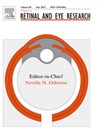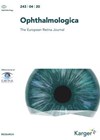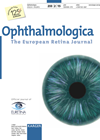
Journal Reviews
Detecting glaucoma with only OCT
In this review article, the authors describe a probability model based upon only OCT to detect glaucoma. They explain how normal anatomical variation can lead to false positives and applying a model to account for this improves specificity. The application...
Retinal changes prior to hydroxychloroquine toxicity
In this retrospective longitudinal study, the authors examined changes in retinal layer thickness in patients taking hydroxychloroquine without evidence of retinopathy. Patients were drawn from a hydroxychloroquine screening clinic and required at least two OCT scans, at least one year...
OCTA in geographic atrophy
In this article the authors aim to give an overview of the current literature concerning the application of OCT-A in geographic atrophy (GA). GA is a disease characterised by loss of outer retinal layers including photoreceptors, degeneration of the retinal...
Assessment of retinal capillary VD and FAZ area in CSC using OCTA
The authors aim to report a cross-sectional, case controlled study, the purpose of which was to access the retinal capillary vessel density (VD) and foveal avascular zone (FAZ) area in acute and chronic central serous chorioretinopathy (CSC) patients compared to...
OCT choroidal signs for congenital retinal pigment epithelium hypertrophy
Congenital hypertrophy of the retinal pigment epithelium (CHRPE) on ocular coherence tomography (OCT) has the characteristic sign of RPE thickening and hyper reflectivity. However, the underlying choroid characteristics remain under researched. This retrospective study utilised data from an ophthalmic oncology...
Microvasculature changes of mCNV after ranibizumab treatment using OCTA
In this study the authors aim to evaluate the vascular changes of myopic choroidal neovascularisation (mCNV) after ranibizumab treatment using optical coherence tomography-angiography (OCTA). The 3×3 OCTA en face images were analysed for the absence / presence of mCNV, CNV...
RaScaL Study
The RaScaL study was a six month, single-centre, controlled, prospective phase I/II study in which subjects with diabetic macular oedema (DME) and associated peripheral nonperfusion on ultrawide-field fluorescein angiography (UWFA) were randomised to: (1) study arm: ranibizumab (0.5 mg) injection...









